Complete the following reactions: a.
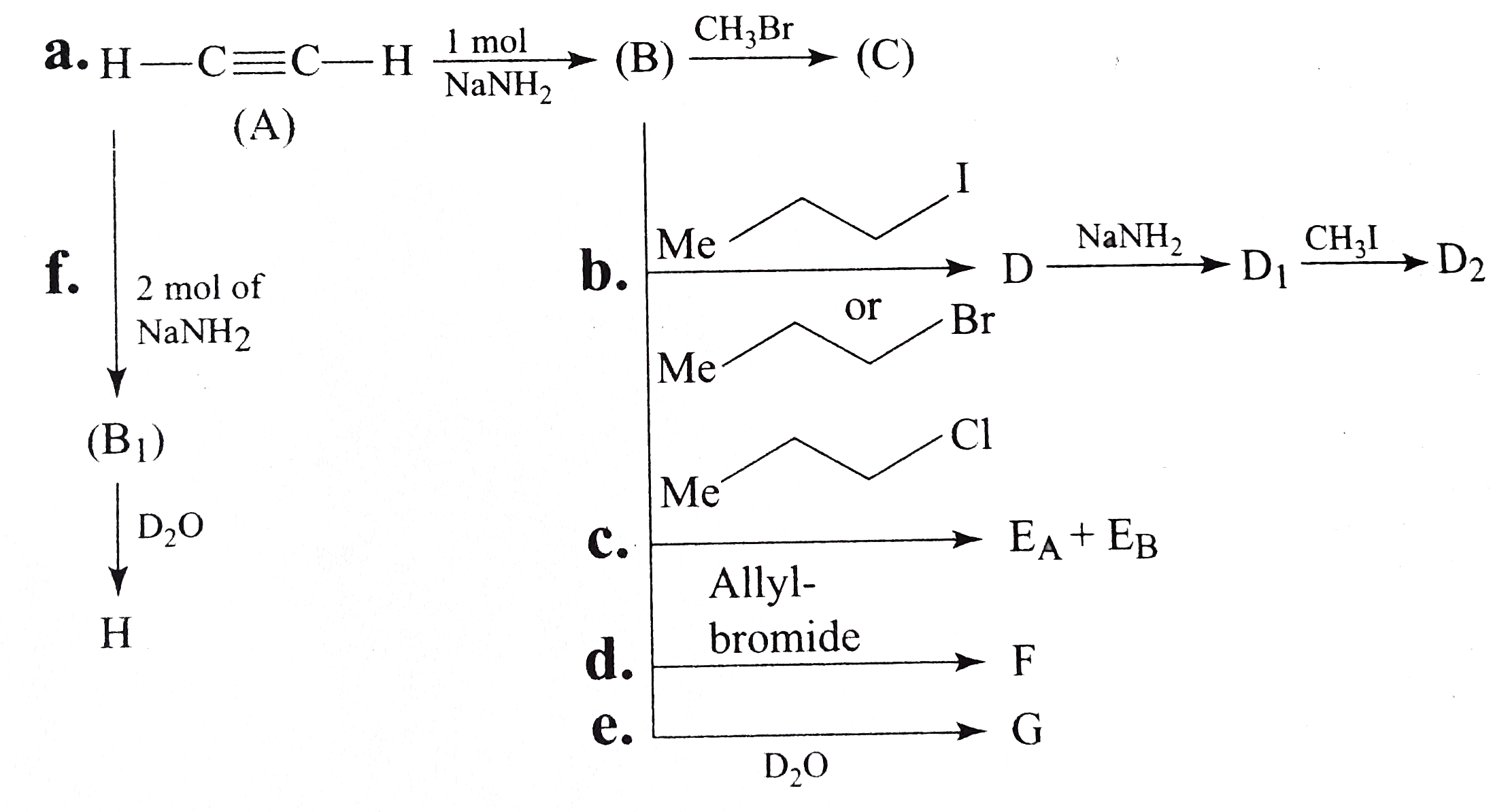
g.
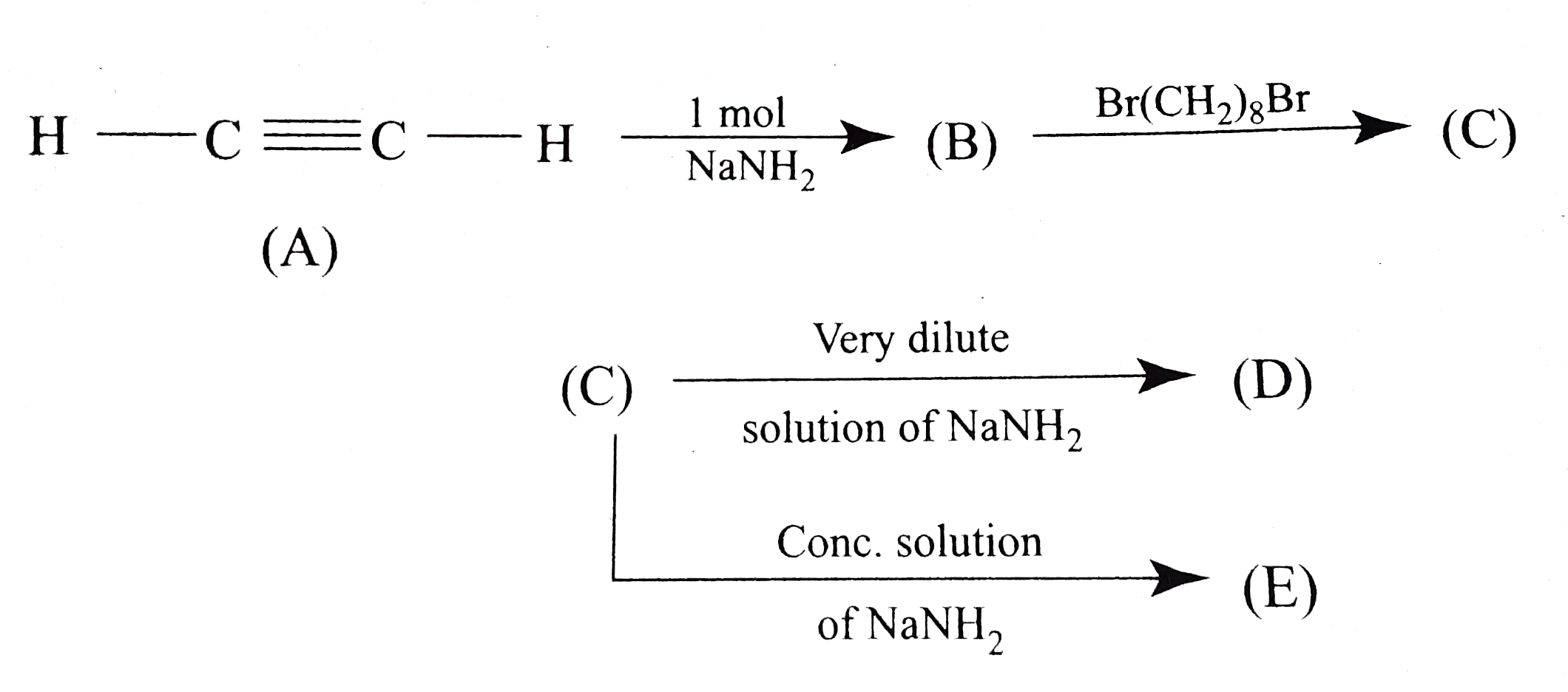
a.
b. 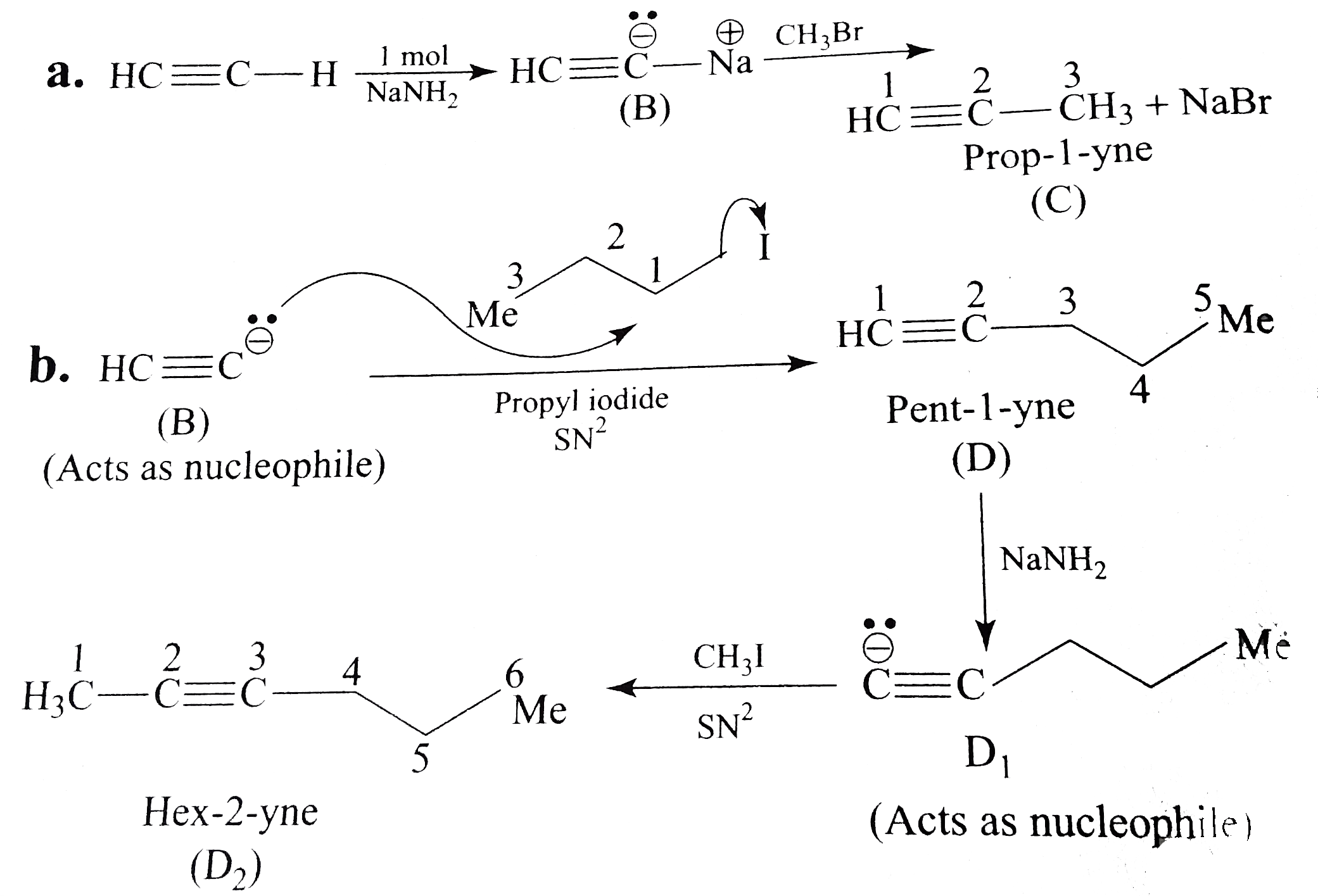
With and reaction is dominant because and are better leaving groups. But is a better leaving group than . So with RI the reaction is faster than with .
c. With , reaction is dominant over reaction.
is a poor leaving group than either or .
Moreover, is a better acid-strengthening group than or , which facilitates the removal of -proton from the alkyl halid. Furthermore, alkynides are powerful bases but mild nucleophiles.
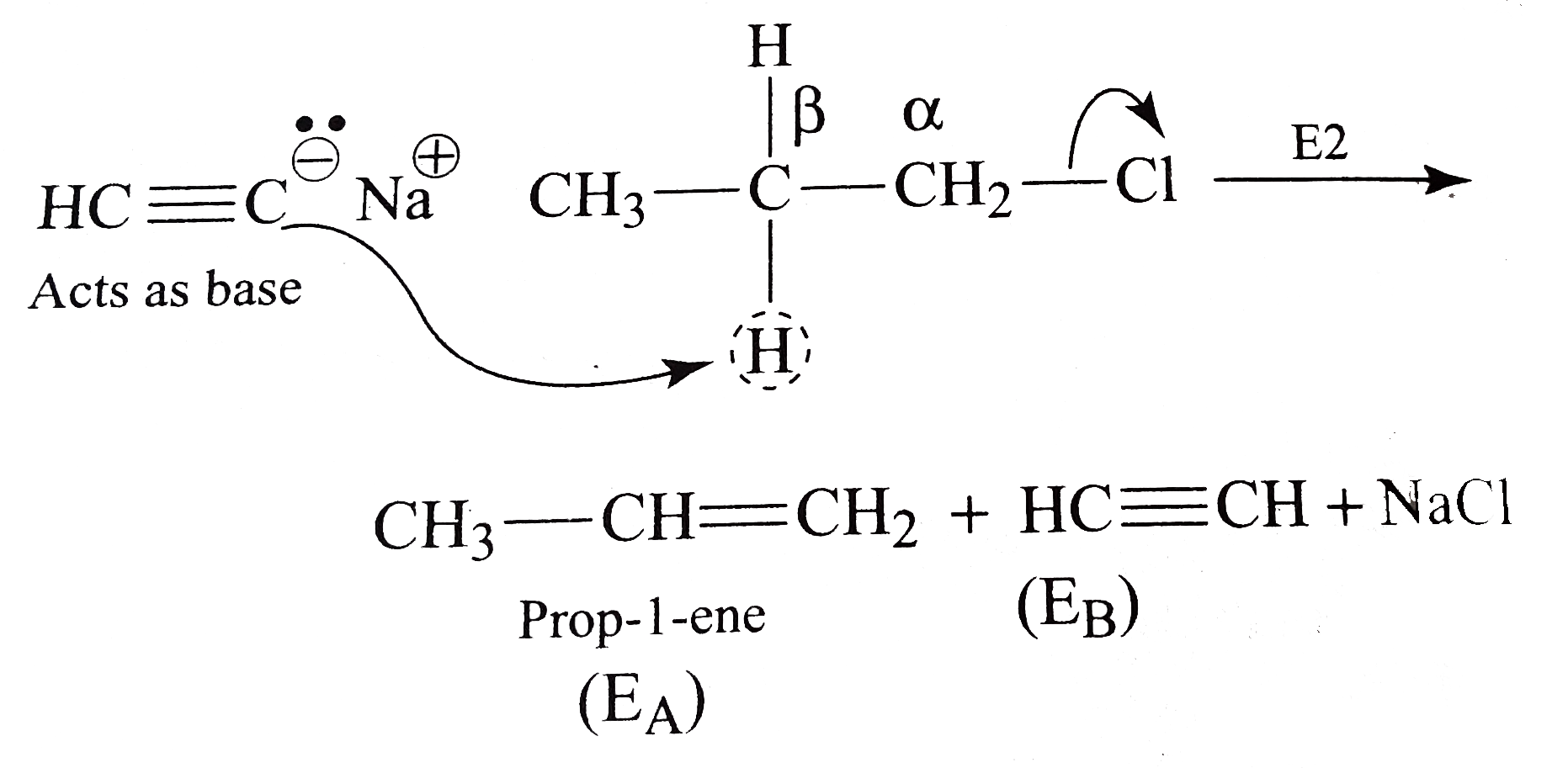
d. 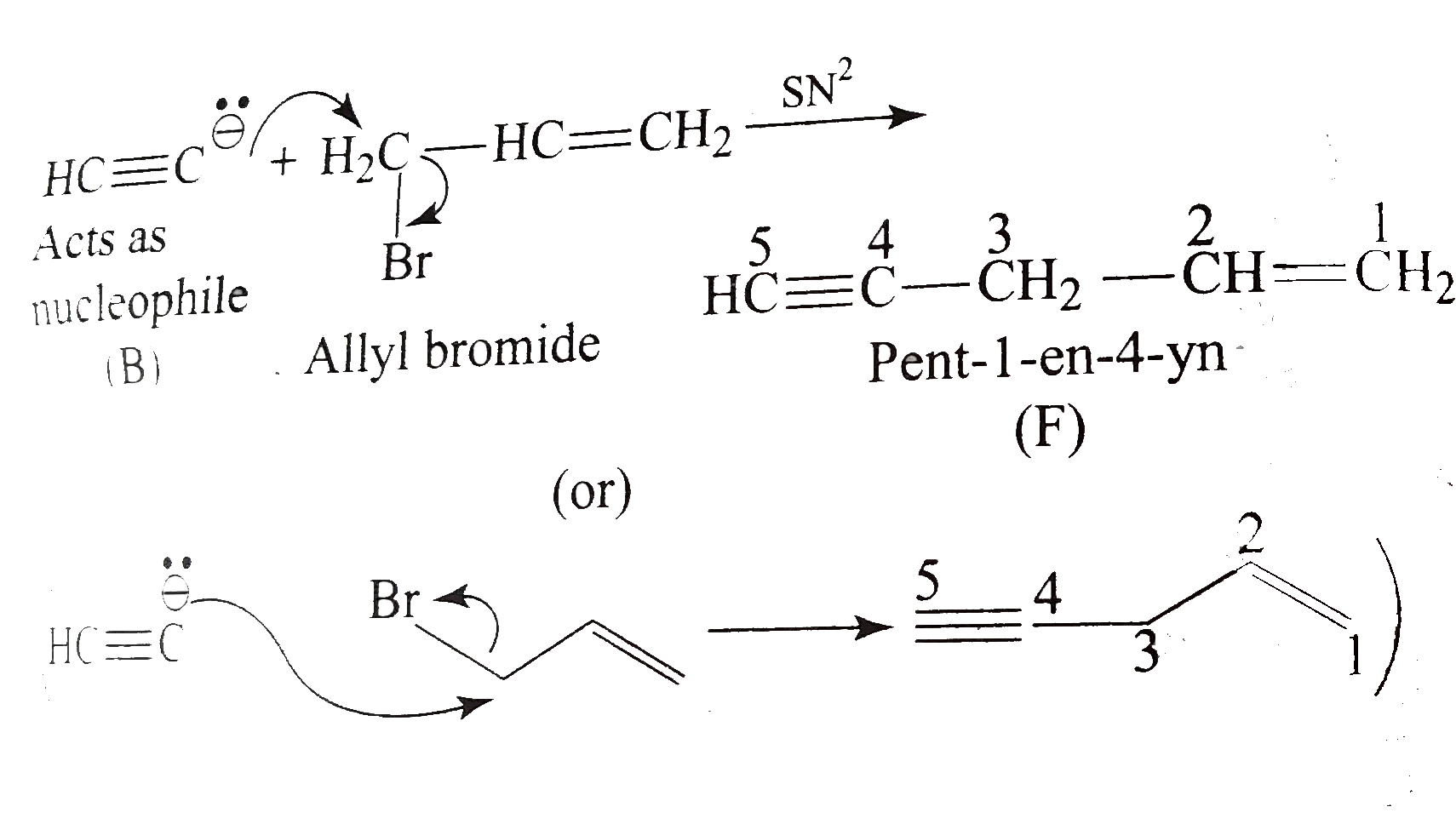
e.
f.
g. 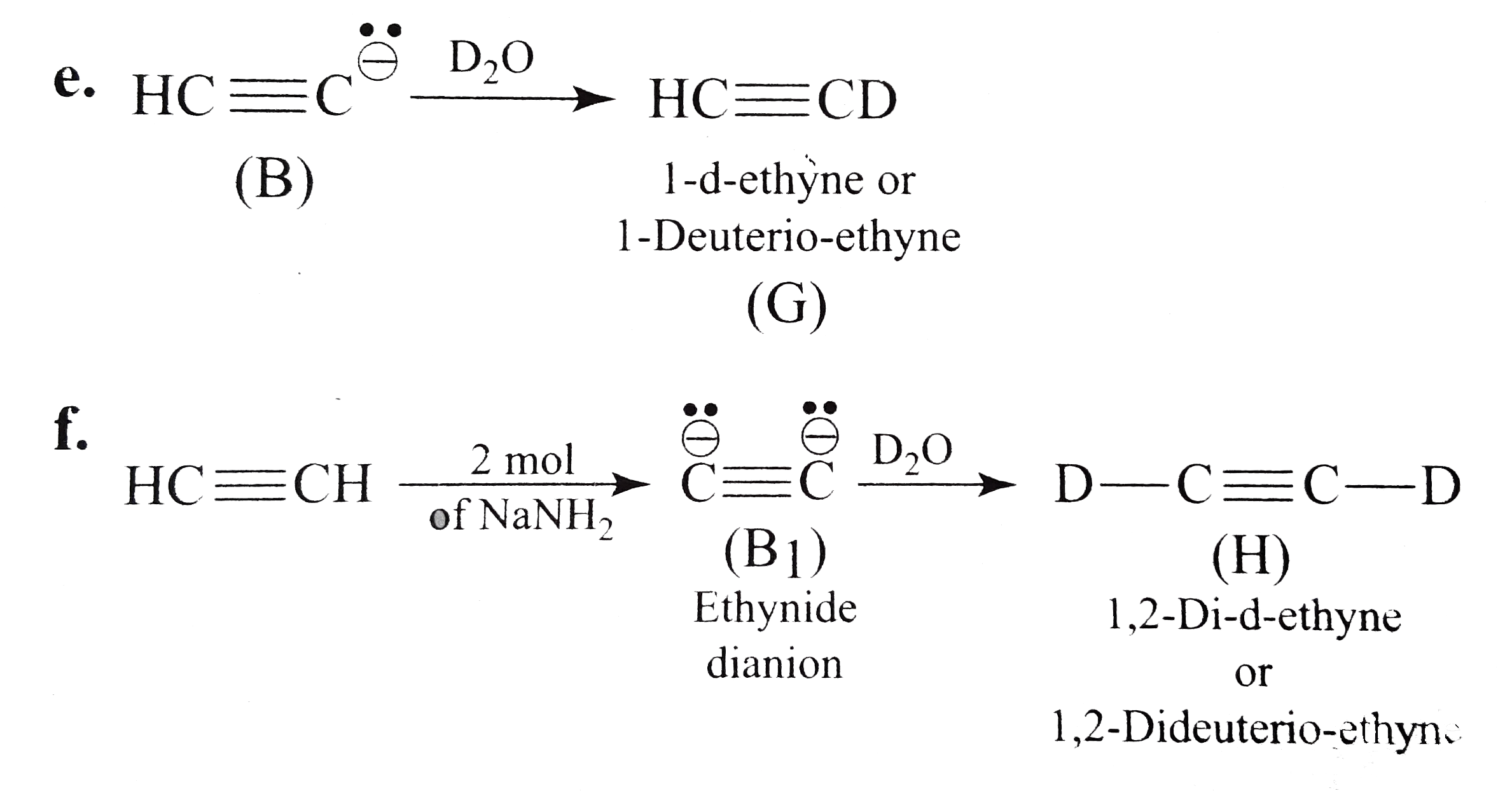
First reaction, i.e., alkylation of acetylide, occurs with difficulty. The second alkylation giving rings is again difficult. Intramolecular cyclisation leading to rigs with more than six C atoms is difficult and the intermolecular reaction predominates.
If a very dilute solution of is used, then intramolecular cyclisation takes place, thereby making it difficult for two molecules to collide to give the intermolecular alkylation.
Intermolecular alkylation:
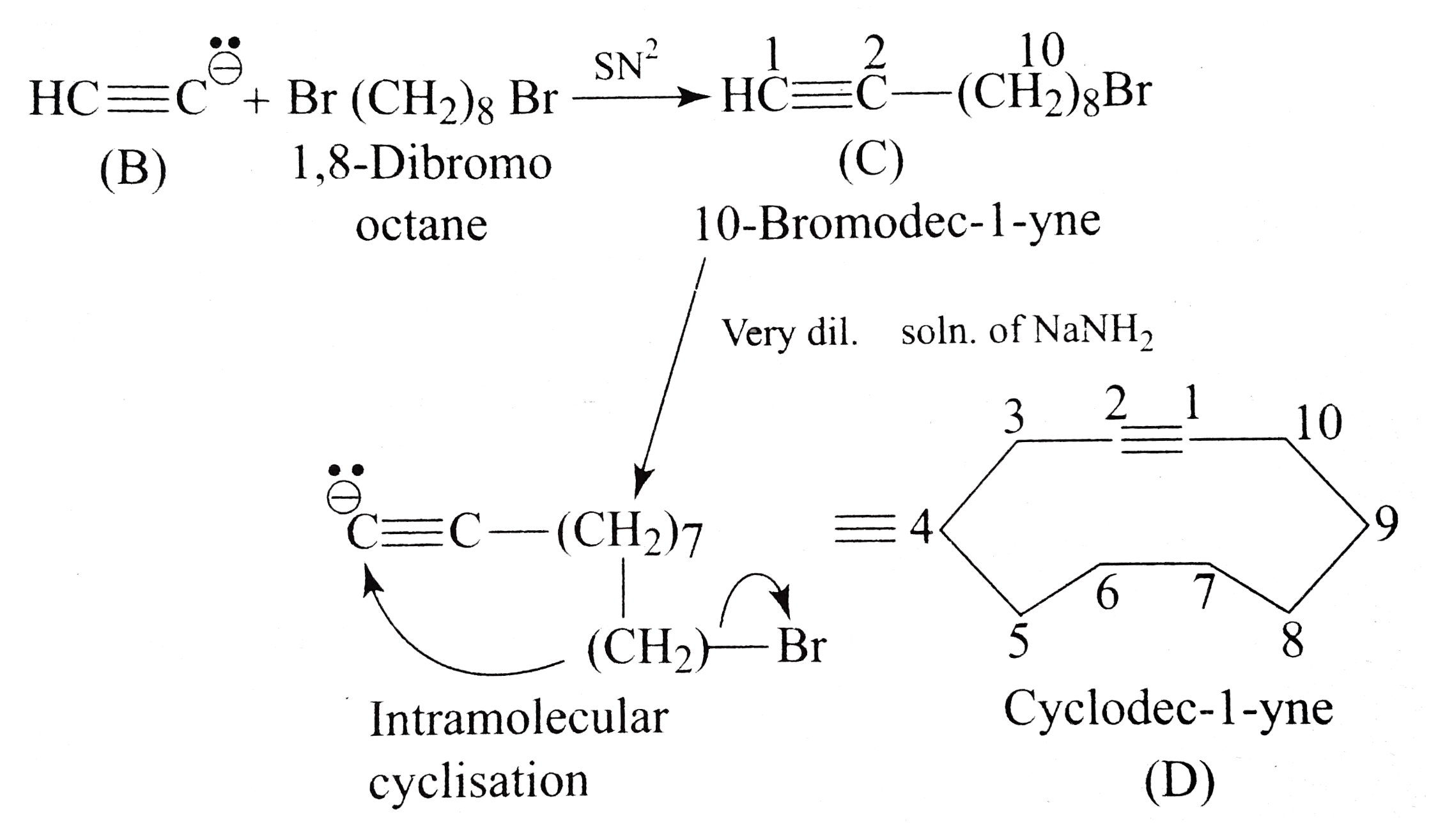
Topper's Solved these Questions
- ALKYNESBOOK - CENGAGE CHEMISTRYCHAPTER - ALKYNESEXERCISE - Solved Examples
24 Videos
- ALKYNESBOOK - CENGAGE CHEMISTRYCHAPTER - ALKYNESEXERCISE - Exercises (Subjective Type)
31 Videos
- ALKENES AND ALKADIENESBOOK - CENGAGE CHEMISTRYCHAPTER - ALKENES AND ALKADIENESEXERCISE - Single correct Answer
14 Videos
- APPENDIX - INORGANIC VOLUME 1BOOK - CENGAGE CHEMISTRYCHAPTER - APPENDIX - INORGANIC VOLUME 1EXERCISE - chapter-7 Single correct answer
1 Videos
Similar Questions
Knowledge Check
H3C−C=Ch1.NaNH2−−−−−−−−→2.CH3CH2BrAH2Pd−BaSO4B:
AAisH3C−CH2−C=CHBA is CH3−C≡C−CH2CH3C D
D
The product which is not formed in the following reaction :
Ph−CH3∣C∣OH−C∣OHH−C∣OHH−CH3∣CH−CH2OHHIO4(excess)−−−−−−−−→AHCOOHBPh−C∣∣O−CH3COHC−CH3∣CH−CH2OHDOHC−CH3∣CH−CHOIn the reaction CH3−C≡C−H(i)NaNH2/NH3(l)−−−−−−−−−−−−−→(A)CH3−CH2−CH2−Br−−−−−−−−−−−−−→(B) The product B is
ACH3−C≡C−CH2−CH2−CH3BCH3−CH=CH2CCH3−CH2−C≡C−CH2−CH3DCH3−CH=C=CH−CH2−CH3
Complete the following reactions:
a. Benzene(A) Ac2O−−−−→+AICI3 (B) (i)MeMgBr−−−−−−−→(ii)H3O(+) (C) Conc.H2SO4 (D) 1.BH3/THF−−−−−−−−−−→2.H2O2/O(−)H (E)
b. MeCH2Br(A) alc.−−→KOH (B) Br2−−→ (C) 2NaNH2−−−−→ (D) RMgBr−−−−→1mol RH + (E) 1.Ace→≠−−−−−−→2.H3O(+) (F)
c.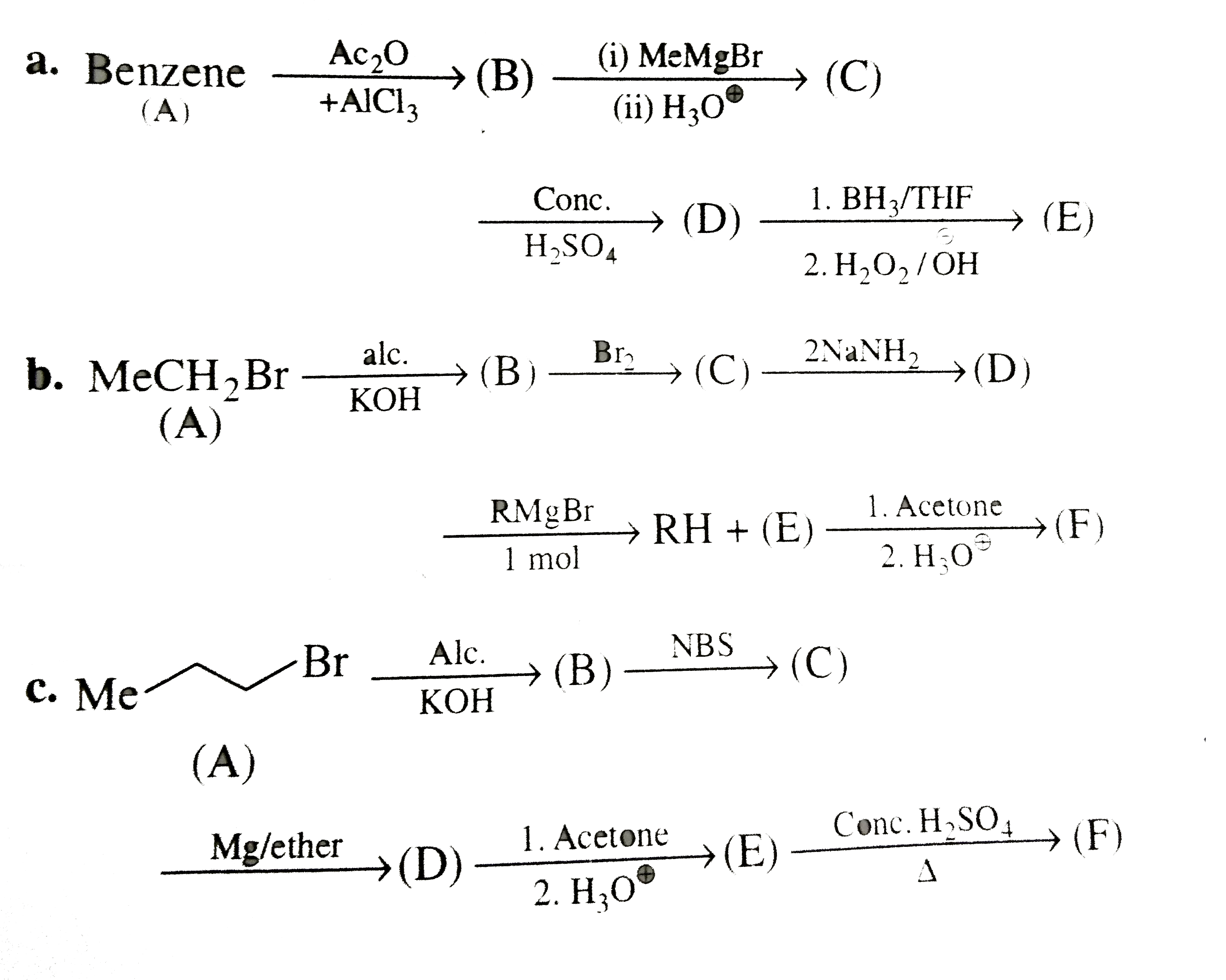 A1c.−−→KOH (B) NBS−−→ (C)
A1c.−−→KOH (B) NBS−−→ (C)
Mg..ether−−−−−−→ (D) 1.Acetone−−−−−−→2.H3O(+) (E) conc.H2SO4−−−−−−−→Δ (F)
View SolutionComplete the following sequence of reactions :
_E01_782_Q01.png) P2O5−−→Δ(A)H3O+−−−→(B)Br2/P−−−→(C)AgOH−−−→(D)Δ−−−−→−2H2ODiester.
P2O5−−→Δ(A)H3O+−−−→(B)Br2/P−−−→(C)AgOH−−−→(D)Δ−−−−→−2H2ODiester.
View SolutionComplete the following reaction:
o−HOOC(A)−C6H4−CH2−PhSOCl2−−−→(B)
Anhyd−−−−−→AlCl3(C)Zn+Hg−−−−−−−→+HCl(D)SorSe−−−−−→600∘C(E)
View SolutionIdentify (A),(B),(C ) and (D) in the following reactions :
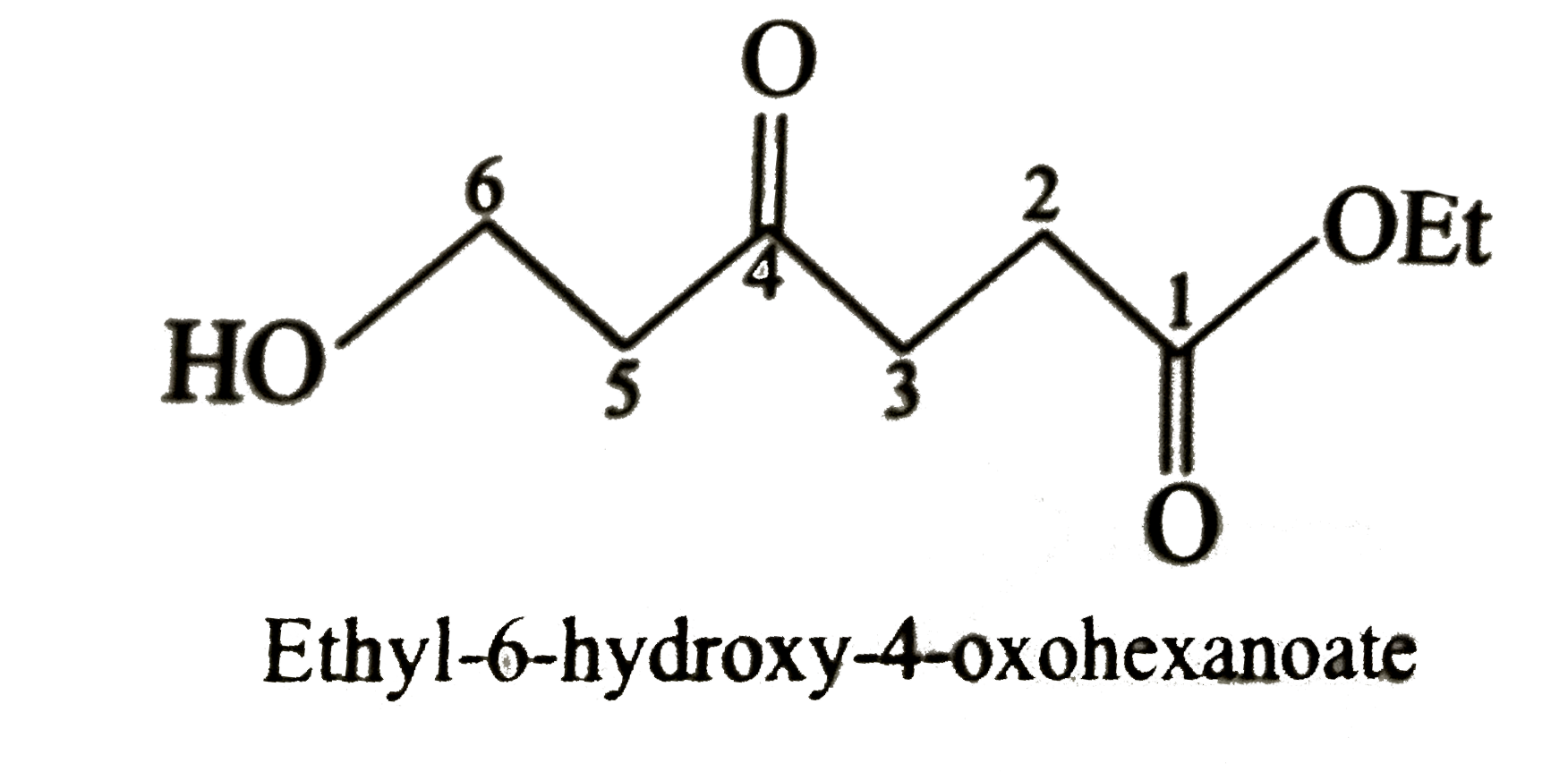 MeMgBr−−−−−−−→(1 mol)(A)MeMgBr−−−−−−−→(1 mol)(A)MeMgBr−−−−−−−→(2 mol)(C)H+,H2O−−−−−→(D)
MeMgBr−−−−−−−→(1 mol)(A)MeMgBr−−−−−−−→(1 mol)(A)MeMgBr−−−−−−−→(2 mol)(C)H+,H2O−−−−−→(D)
View SolutionIn the reaction :
CH3−C≡C−H(i)NaNH2/NH3(I)−−−−−−−−−−−−−→(A)CH3−CH2−CH2−Br−−−−−−−−−−−−−→(B)
the product (B) is :
View Solution

_S01_429_Q01.png)
_S01_429_Q02.png)